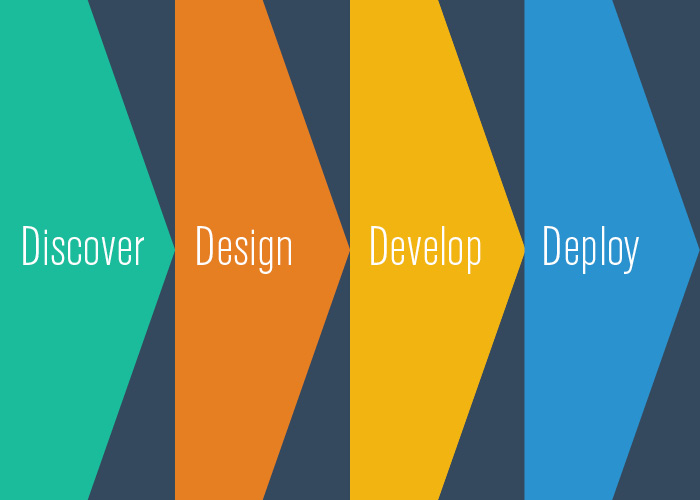We’re in the middle of several website proposals, so I’ve thinking about the optimum process of developing a site, since allotting time to address each step will ensure client happiness and a solid brand experience.
So having a defined approach covering all the necessary steps is crucial in both estimating a project. And in educating a client to grasp the complexities of the design process.
I pull a favorite text off my bookshelf: “Designing Brand Identity” by Alina Wheeler. Within she offers an process I follow instinctively but hadn’t put on paper. (Alina credits Stela Gassaway, Principal at Stellavison for this detail.) It goes something like this:
1. Begin planning
State goals and objectives. Assemble the team. Identify key messages. Define the audience. Discuss priorities. Decide what constitutes success.
2. Lay foundation
Review competitive websites. Learn audience specifics. Identify who will provide content. Discuss necessary functionality. Develop plan for refreshing content. Audit current site if any. Agree on deliverables.
3. Develop site framework.
Prepare content outline. Visualize navigation paths. Create wireframe diagram. Map content to pages.
4. Develop content
Request existing content from client in digital format. Edit existing content for online viewing. Set dates for content delivery and review.
Consider SEO when writing new text. Commission new photography & visual icons. Edit and proofread content. Secure client approval.
5. Create visual design
Develop a color palette. Consider layout approaches of primary and secondary pages. Determine appropriate typography. Decide on link conventions. Think Mobile First. Handle display of video. Secure user reactions to prototype.
6. On the technical side
Choose integration applications. Code for responsive display. Select WordPress vs alternate CMS. Address Gallery and Product page details. Verify site security. Determine backup procedure. Develop prototype and test.
7. Complete development
Write HTML & CSS3 code. Optimize images and visual assets.
Drop in content. Approve test site. Multi-platform testing. User testing. Speed tests.
8. Site launch
Begin site promotion. Launch and propagate. Review initial Google Analytics. Measure for success.
This detailed process reminds me again that there’s an established best practice for site design. Shortcuts usually end up costing the client more in the end. Avoid surprises by sticking with what works and accounting for that time in the initial estimate.
